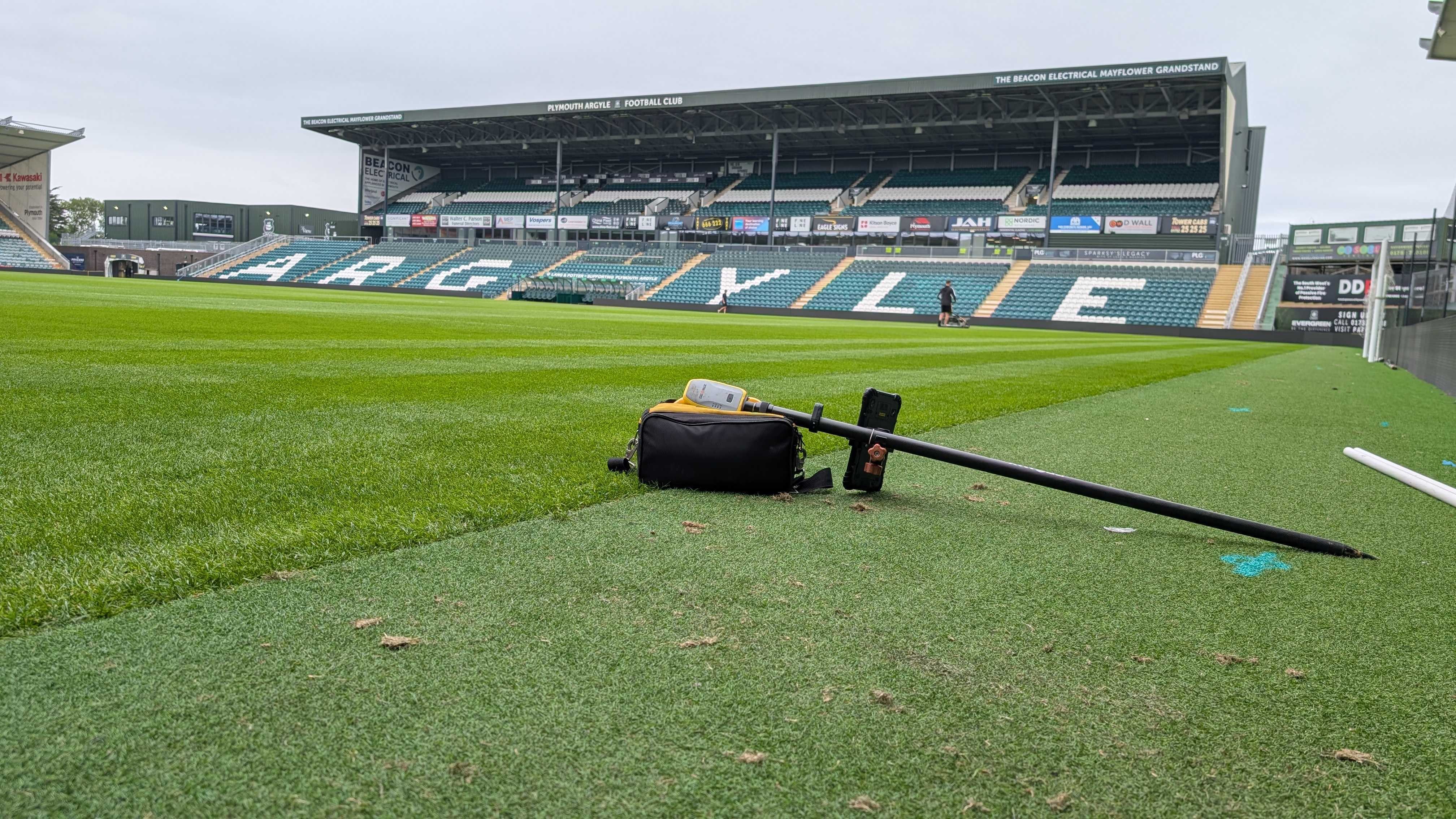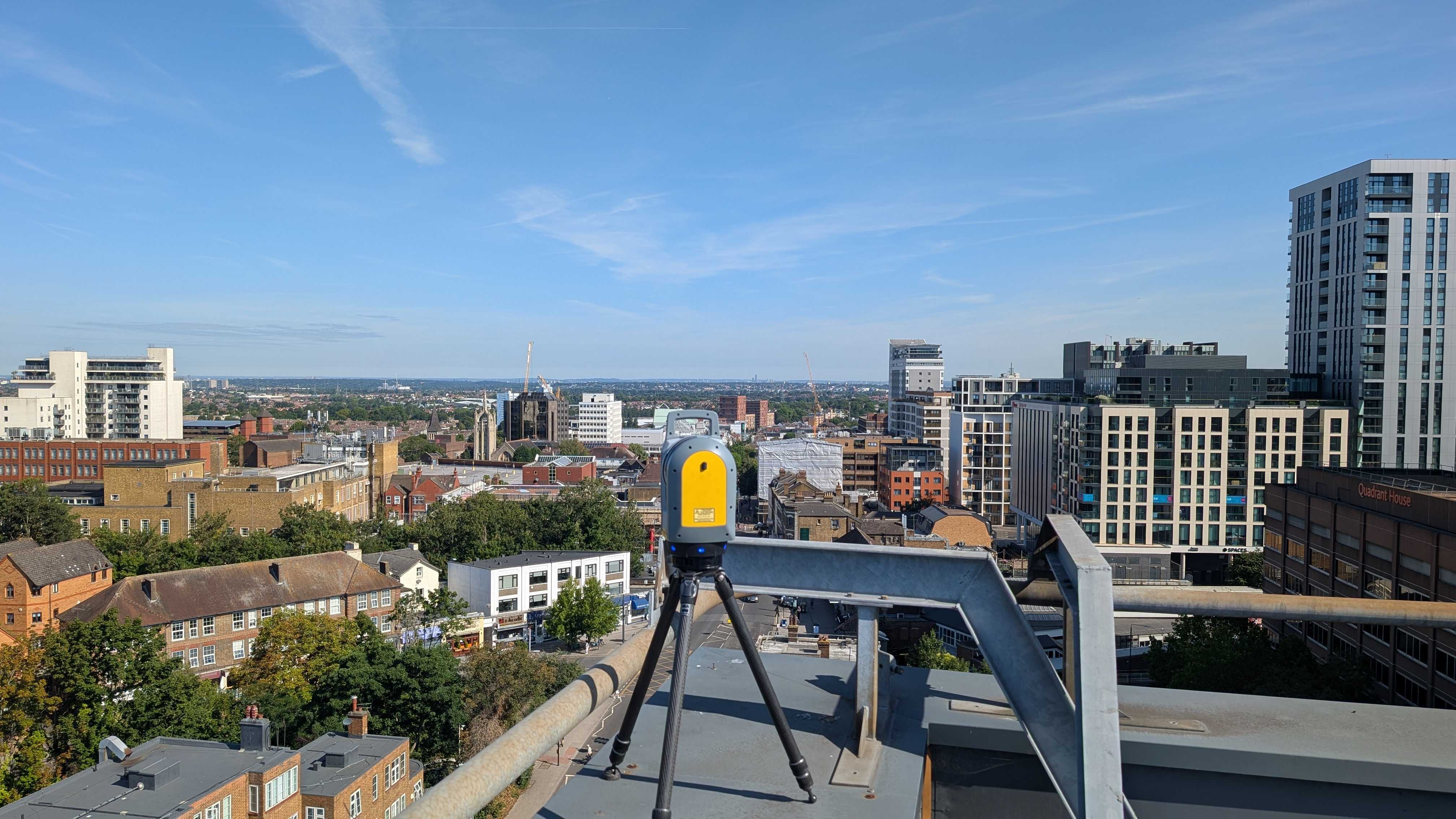Before a construction project begins, it is crucial to thoroughly assess a job to avoid mistakes and safety issues.
One method that has gained popularity in recent years is the use of Ground Penetrating Radar (GPR) surveys.
It involves using specialised equipment that emits electromagnetic waves, usually in the range of 10 MHz to 2.6 GHz, into the ground and measures the reflected signal.
Two types of GPR surveys that are frequently used on construction projects:
- High-frequency GPR – suitable for shallow depths that offer a high-resolution image, perfect for concrete scanning.
- Low-frequency GPR – suitable for deeper depths, which is more likely to be used for picking up utilities.
These surveys are non-destructive and provide crucial information on buried utilities, geological features, and possible obstacles before a project starts.
In this blog, we’ll take a deeper look at what GPR surveys are, why you might need them, and how they can benefit your construction projects.
What Can GPR Surveys Detect?
Ground Penetrating Radar uses high-frequency radio waves to penetrate the ground and detect changes in the composition of materials at different depths. It then creates a visual image that maps variations in the subsurface. This image can be used to identify the location of underground utilities, pipes, voids and other possible obstructions, with a follow-up topographical survey.
By finding these, project plans can be edited accordingly, which saves you time and cost in the long run.
Some of the materials that a GPR survey can detect are:
Concrete: Buildings and other infrastructure may be buried beneath the site's surface.
Natural Materials: Rocks and other geological structures can cause major issues when building on the land.
Metal: Copper pipes and other naturally occurring metals can be found using GPR and possibly used as resources.
However, 99% of what services such as those at Intersect Surveys are looking for are buried services and buried objects such as:
Plastic: Plastic pipes can be below the surface running between other infrastructure.
Buried objects: Buried tanks, drums, or containers, which may be associated with environmental contamination, can be detected.
What Are GPR Surveys Used For?
Although GPR surveys have many uses, from assisting archelogy work to crime scenes, utility work and construction companies rely on the results from these surveys to continue their projects.
Before new construction can begin on old infrastructure, thorough checks need to be done. Similarly, mapping out the infrastructure that came before is important to ensuring the safety of workers and the functionality of the new installation.
The survey must be carried out according to the latest PAS 128 survey. which is the PAS128: 2022, standard to ensure complete compliance. "PAS 128 also sets out the accuracy to which the data are captured, the quality expected of these data and a means by which to assess and indicate the confidence that can be placed in such data."
By using a GPR survey you can expect to:
Save Time with GPR Surveying
By detecting possible issues on the site with GPR, you can save time by dealing with any issues when they’re first discovered. This eliminates the need for more traditional methods of checking for underground utilities like manual digging or probing, which are often slow and labour-intensive processes. As GPR doesn’t require any digging, construction teams can understand what is going on underground without making any extra mess.
The use of GPR also reduces the possibility of costly mistakes brought about by missing or incorrectly located subsurface objects. This not only increases safety but also saves time as it eliminates any delays caused by misidentifying utility lines or structures.
Save Money with GPR Scanning
GPR can save money in construction projects by reducing the need for costly and time-consuming exploratory digging.
GPR can accurately identify utilities in the subsurface without having to break ground, allowing for faster decision-making on project design and layout. By doing this, costly surprises can be identified quickly.
As the budget is often tight on construction projects, anything that can potentially add to this can cause mass stress within your team – so detecting these early on can keep the entire project on track.
Improve Safety with GPR Searches
Discovering underlying issues can protect not just the team, but the public.
By using a GPR survey to design a safe project, planning around existing pipes, rocks and other features below the ground can save the risk of injury.
If a structure was built on unsafe land, this raises the chances of major injuries happening on-site or casualties because of burst pipes or other utility-related incidents.
How To Benefit From GPR Surveys
With its non-destructive nature and ability to provide comprehensive subsurface information, GPR has become an essential piece of technology in the construction industry.
By choosing to use a GPR survey for your next project, you can be confident that you are aware of your surroundings and that you aren’t going to encounter any costly challenges or discoveries later in your timeline.
Make sure to get in touch with Intersect Surveys to discuss your project needs, and how a GPR survey can benefit you.
By speaking with one of our experts, you can learn more about GPR surveys, and ask any questions you feel are still unanswered.








